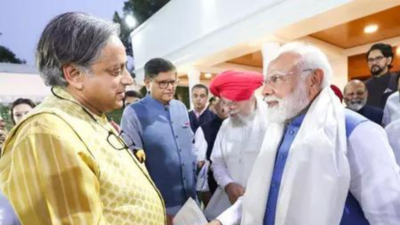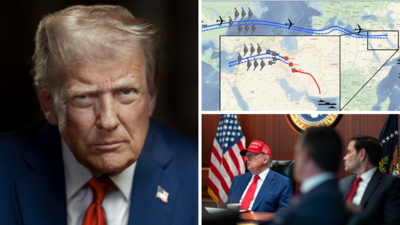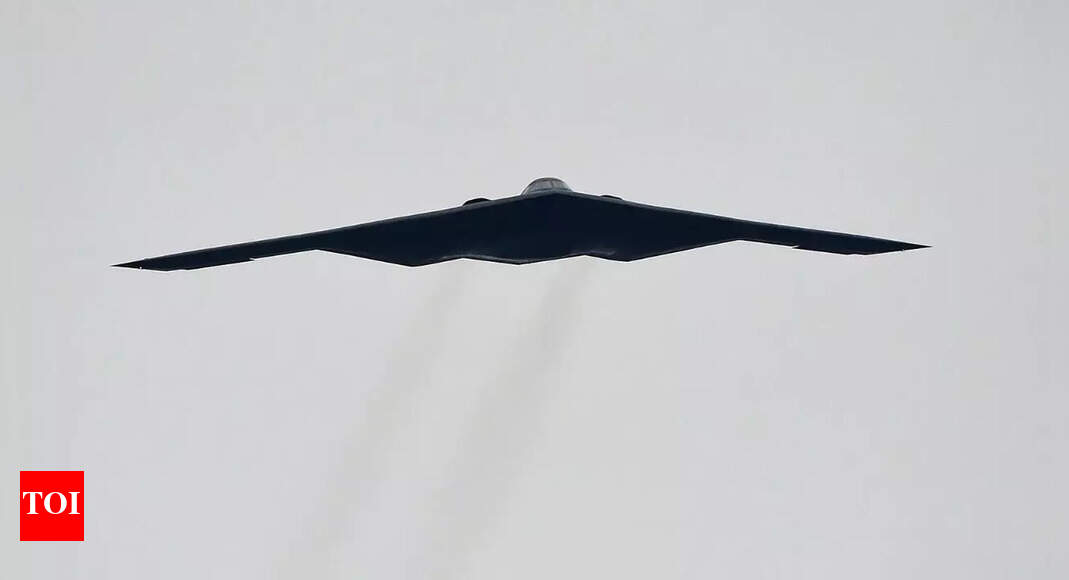‘It was a ruse’: Inside Trump’s war room; how ‘Operation Midnight Hammer’ against Iran was planned

In a move that marks a dramatic escalation in US-Iran tensions, American President Donald Trump ordered a high-precision military strike on Iranian nuclear facilities on Saturday, authorising the first major US military action on Iranian soil since the fall of the American-backed Shah in 1979.The operation, carried out by a small fleet of US B-2 stealth bombers, was planned under intense secrecy and executed just hours after Trump returned from his New Jersey golf club to the White House. In classic Trump fashion, he announced the strike minutes after it concluded, “Congratulations to our great American Warriors. There is not another military in the World that could have done this. NOW IS THE TIME FOR PEACE!.“Photo: Inside Trump’s war room – a secretive, surgical attackThe White House later released tightly controlled photos from the classified Situation Room, showing Trump, wearing his signature red MAGA hat, flanked by his war cabinet. CIA director John Ratcliffe, defense secretary Pete Hegseth, and White House chief of staff Susie Wiles were present, though national intelligence director Tulsi Gabbard was conspicuously missing, amid rumours of internal friction.
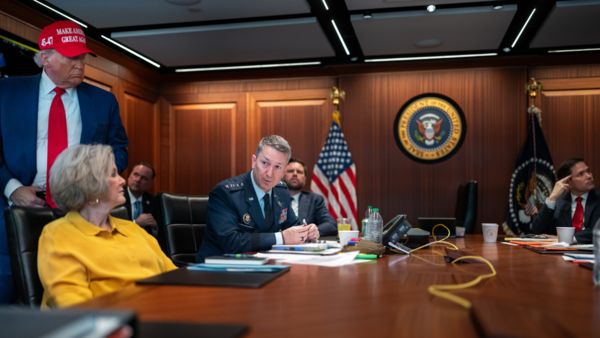
US President Donald Trump in The Situation Room, June 21, 2025 (Pic credit: White House)
Photos blurred key documents on the table, echoing the Obama-era images of the 2011 Bin Laden raid. But where Obama’s photos suggested deliberation and calm, Trump’s leaned into theatrics—part documentation, part spectacle, all calculated for impact.
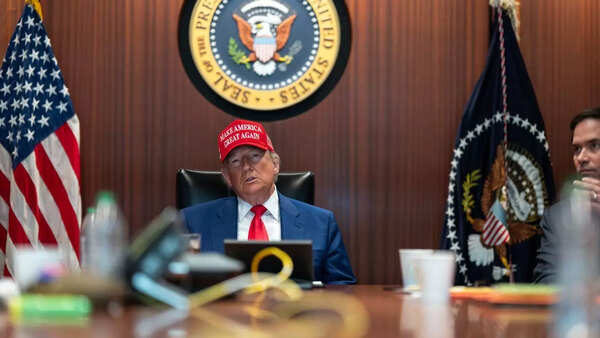
US President Donald Trump in The Situation Room, June 21, 2025 (Pic credit: White House)
A strike months in the making, publicly denied until the last hourThough Trump projected uncertainty all week, publicly musing on whether he might “take two weeks” to decide, the internal gears of war were already in motion. By Thursday, he had approved detailed attack plans. By early Saturday morning, seven B-2s were already airborne.“It was a ruse,” a senior administration official admitted, according to The Washington Post. Only a tight circle of aides were read in: VP JD Vance, CIA chief Ratcliffe, defense secretary Hegseth, national security envoy Steve Witkoff, and secretary of state Marco Rubio, among others. Some in the broader White House apparatus were in the dark until the bombs had already fallen.The final decision, it seems, was not so much a moment as a mood.Trump’s two-week bluff? Trump’s claim that he might take “two weeks” to decide on striking Iran was a calculated deception, designed to throw Tehran off balance. Behind the scenes, however, the decision had already been made, and stealth bombers were preparing for takeoff. A senior administration official later admitted the delayed talk was “our attempt to throw the Iranians off guard,” though there was “some truth” to it, according to The Washington Post. The public indecision masked a fast-moving, tightly held operation that unfolded just 36 hours later.Iran’s red line: Nuclear enrichmentAt the heart of the conflict: Iran’s refusal to halt its nuclear fuel enrichment program, an issue that has vexed American presidents for decades. In Geneva last week, European diplomats met with Iran’s foreign minister Abbas Araghchi, but the talks stalled. Tehran wouldn’t budge unless the bombing stopped. Trump, in turn, wouldn’t stop unless Iran surrendered its nuclear future.This time, the ultimatum came with an unmistakable threat: Trump warned Tehran to “immediately evacuate” and told Iran’s Supreme Leader Ayatollah Khamenei that “he could be next.”Despite the bombast, Trump never spoke to Iranian officials directly. Instead, Witkoff held backchannel negotiations. Trump’s demand: zero enrichment, full dismantlement. Iran’s answer: no.Behind the scenes: Friction, fundraisers, and the MAGA war roomWhile B-2s sped across the Atlantic, Trump wasn’t in a bunker, he was at a fundraiser. Vice President JD Vance was flying back from California. The air of normalcy masked the imminent shockwave.But inside the Situation Room, the president’s loyal cadre assembled. Among them: social media gatekeeper Dan Scavino, press secretary Karoline Leavitt, and even AG Pam Bondi, who hadn’t been involved in the planning but was brought in at the eleventh hour.
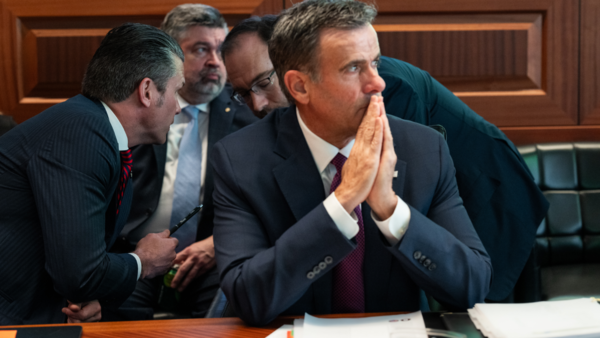
Top US officials in The Situation Room, June 21, 2025 (Pic credit: White House)
Outside the government, Trump’s populist whisperers, Steve Bannon, Charlie Kirk, and Jack Posobiec, were kept in the loop to shore up political backing. The strike wasn’t just a military message, it was a campaign moment in the making.“He was listening to people across the ideological perspective” of his political base, The Washington Post quoted the senior administration official. “Ultimately, the president felt this is a decision the base should support and get behind, because ultimately, he’s preventing a conflict that very well could have happened if the supreme leader instructed Iran to create the nuclear weapon,” he added. Global fallout and strategic calculationsThe strike was timed precisely, coming just days after Israel launched its own offensive against Iran on June 13. By midweek, Israeli air dominance helped tilt US military calculations toward optimism.Ret. Lt. Gen. Charlie “Tuna” Moore put it bluntly: “Although we could have executed our operation unilaterally, without a doubt it was beneficial to the United States to have that as the predicate.”Even VP Vance, who had privately raised concerns, ultimately signed off. His Iraq War experience made him cautious, but not obstructionist. “He wanted the tires kicked,” one official said.”
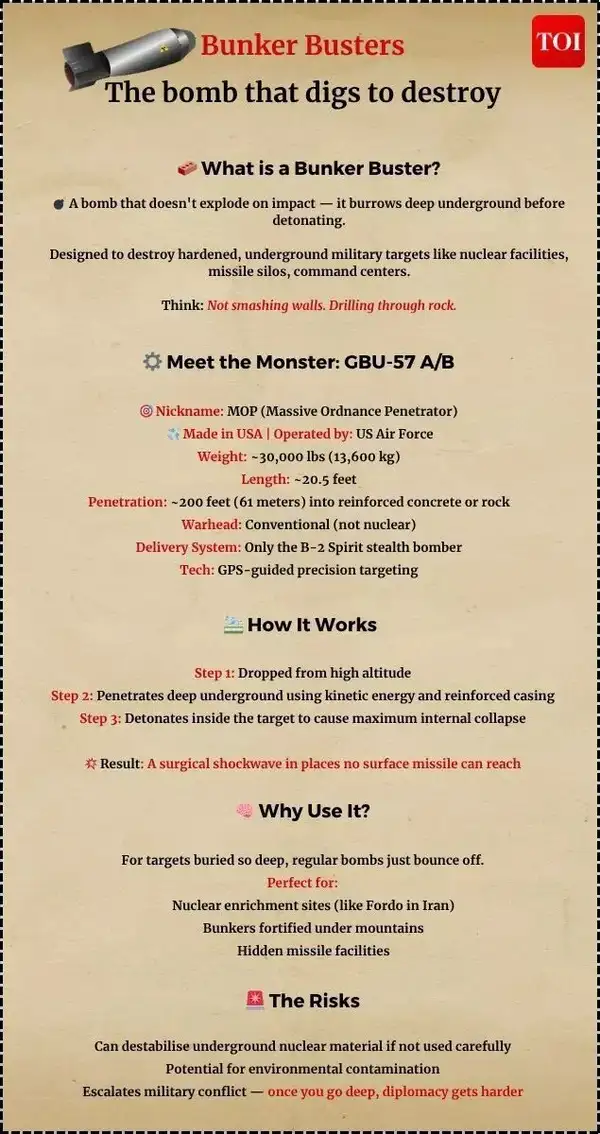
Bunker Busters: The bomb that digs to destroy
A calculated gambleIn the end, Trump’s decision marked a sharp pivot from decades of American hesitation. Every president since Carter has baulked at the idea of a full strike on Iranian territory. Trump just did it.Whether it stabilises or further inflames the region remains to be seen.Rubio has begun briefing European allies post-strike. Iran, for now, is unlikely to let this go unanswered.In Sunday interviews, Vance admitted no one truly knew when Trump made the call, not even him.“I don’t know that any of us knew exactly when the president made the decision except for the president himself,” he said on “Meet the Press.”
